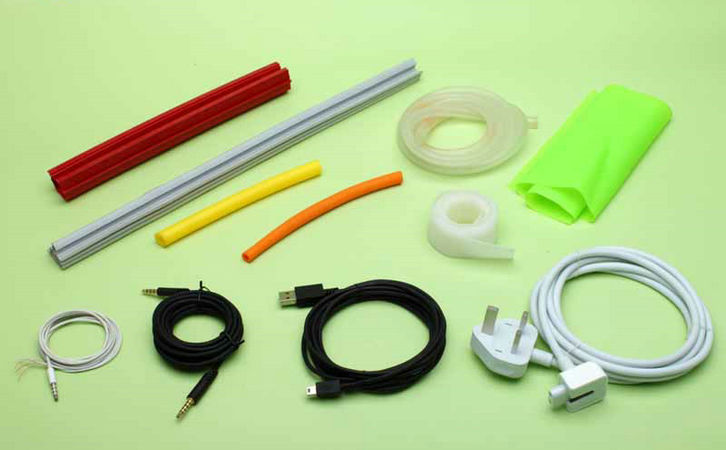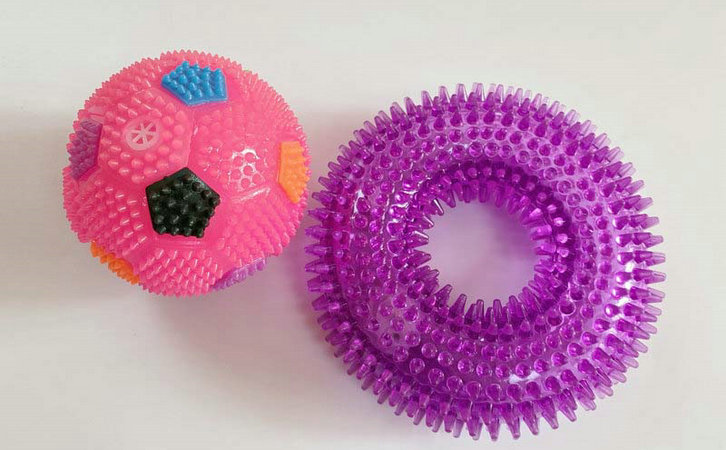As someone who has been deeply involved in the thermoplastic elastomer (TPE) industry for years, I understand both the allure and challenges of TPE materials. Known for their softness, durability, and ease of processing, TPEs are widely used in medical devices, automotive components, consumer goods, and more. However, many newcomers to TPE often find themselves puzzled: How exactly should TPE raw materials be used? How can their full potential be unlocked? In this article, I’ll draw on my experience to provide a detailed guide on using TPE, covering processing techniques, practical tips, and troubleshooting, helping you avoid common pitfalls.

Why Are TPE Raw Materials So Popular?
TPE, or thermoplastic elastomer, is a unique material that combines the elasticity of rubber with the processability of plastics. Its standout feature is the ability to be molded using thermoplastic processes like injection molding or extrusion while offering rubber-like flexibility and resilience. Additionally, TPE is environmentally friendly, recyclable, and free of PVC or halogens, aligning with modern green manufacturing trends.
In practice, TPE is commonly used to produce soft-touch grips, seals, medical catheters, and sports equipment. Its hardness range is vast (from Shore 0A to Shore 60D), it can be customized in color, and its processing flexibility makes it a favorite among designers and engineers.
That said, working with TPE isn’t as straightforward as handling standard plastics. Factors like processing parameters, mold design, and material formulation can significantly impact the final product’s quality. In the following sections, I’ll break down TPE usage into material selection, processing techniques, and troubleshooting to help you master its application.
1. Selecting TPE Raw Materials: Start with Your Needs
TPE comes in various types, including SBS, SEBS, TPU, and TPO, each suited for specific applications. Choosing the right TPE is the foundation of success. Here are some key considerations based on my experience:
1.1 Define Product Purpose and Performance Requirements
Hardness: TPE hardness is measured in Shore A or Shore D. Low hardness (e.g., 20A) is ideal for soft products like baby toys, while high hardness (e.g., 50D) suits structural components like automotive parts.
Weather Resistance: For products exposed to outdoor conditions, opt for SEBS-based TPE, which offers superior UV and aging resistance.
Chemical Resistance: For applications involving oils or chemicals (e.g., seals), choose TPU or TPEE with strong oil resistance.
Food-Grade Compliance: TPE used in food-contact or medical applications must comply with FDA or EU 10/2011 standards.

1.2 Consider Processing Methods
TPE can be processed via injection molding, extrusion, or blow molding, but different types have varying equipment requirements:
Injection Molding: Ideal for complex shapes like phone cases or toys. Pay attention to TPE’s flowability to avoid mold sticking.
Extrusion: Used for tubing or seals. Select TPE with a high melt flow index (MFI) for smooth extrusion.
Blow Molding: Common for hollow products like soft bottles. Choose highly elastic TPE grades.
1.3 Balance Cost and Performance
TPE prices vary widely depending on formulation and performance. SBS-based TPE is cost-effective but less weather-resistant, while SEBS-based TPE offers excellent performance at a higher cost. If budget is a concern, work with suppliers to develop a cost-effective formulation.
Here’s a table summarizing common TPE types and their applications for reference:
|
TPE Type |
Key Properties |
Typical Applications |
Processing Tips |
|---|---|---|---|
|
SBS-based TPE |
Cost-effective, soft, moderate weather resistance |
Footwear, toys, grips |
Process at 150-180°C, avoid excessive heat |
|
SEBS-based TPE |
Excellent weather resistance, anti-aging, high elasticity |
Outdoor products, medical catheters |
Process at 180-220°C, ensure proper mold venting |
|
TPU |
Wear-resistant, oil-resistant, high strength |
Sports equipment, cable sheathing |
Process at 190-230°C, requires drying |
|
TPEE |
High strength, heat-resistant |
Automotive parts, electronic components |
Process at 200-250°C, suitable for precision molds |
2. TPE Processing Techniques: Details Make the Difference
Once you’ve selected the right TPE, the next step is processing. While TPE processing may seem simple, overlooking details can lead to issues like rough surfaces, mold sticking, or dimensional instability. Here are my key tips:
2.1 Raw Material Pre-Treatment
Drying: TPE, especially TPU and TPEE, is hygroscopic. Dry at 80-100°C for 2-4 hours before processing to ensure moisture content is below 0.1%.
Storage: Store TPE in a dry, cool environment, away from direct sunlight or high temperatures to prevent performance degradation.
2.2 Processing Equipment and Parameters
Injection Molding Machine: Use a machine with a screw length-to-diameter ratio of 20:1 for uniform melt mixing. Keep the screw compression ratio between 2.5:1 and 3:1.
Temperature Control:
SBS-based TPE: Barrel temperature 150-180°C, mold temperature 20-40°C.
SEBS-based TPE: Barrel temperature 180-220°C, mold temperature 30-50°C.
TPU: Barrel temperature 190-230°C, mold temperature 40-60°C.
Injection Pressure: TPE has good flowability, so maintain injection pressure at 50-100 MPa to avoid flash.
Cooling Time: TPE cools quickly, typically requiring 10-30 seconds, depending on part thickness.

2.3 Mold Design
Runner Design: TPE’s low melt viscosity calls for hot runners or short runners to minimize material waste.
Venting System: Include vent slots in the mold to prevent bubbles or burn marks.
Draft Angle: TPE parts are soft, so use a draft angle of 1-2° to prevent mold sticking.
2.4 Secondary Processing
TPE parts can undergo bonding, welding, or printing for further customization:
Bonding: Use specialized TPE adhesives or hot-melt glue, ensuring surfaces are clean.
Printing: For TPE surface printing, use UV ink and perform corona treatment to improve adhesion.
Welding: Ultrasonic welding is suitable for TPE, with welding times of 0.5-1 second.
3. Common Issues and Solutions
Even seasoned engineers can encounter challenges when processing TPE. Here are some common problems and their fixes:
3.1 Rough Part Surface
Cause: Poor mold surface finish or excessively high processing temperatures causing material degradation.
Solution: Polish the mold surface, reduce barrel temperature by 5-10°C, and check for moisture in the raw material.

3.2 Mold Sticking
Cause: Excessive TPE flowability or insufficient mold release agent.
Solution: Increase draft angle, apply silicone-based mold release agents, and slightly lower injection pressure.
3.3 Dimensional Instability
Cause: Insufficient cooling time or uneven mold temperature.
Solution: Extend cooling time by 5-10 seconds and ensure the mold’s cooling channels are functioning properly.
3.4 Bubbles in Parts
Cause: High moisture content in the raw material or poor mold venting.
Solution: Enhance raw material drying and optimize mold vent design.
4. Real-World TPE Applications
To give you a clearer picture of TPE in action, here are two practical case studies:
Case Study 1: Medical Catheter Production
A medical device company needed to produce a soft, durable catheter that met FDA standards. We selected an SEBS-based TPE (Shore 40A) and used extrusion. Key steps included:
Drying the material for 4 hours to keep moisture below 0.05%.
Setting extrusion temperature at 190°C and mold temperature at 40°C.
Using a precision extruder to ensure uniform wall thickness. The final product was highly flexible, kink-resistant, and passed biocompatibility tests.

Case Study 2: Injection-Molded Sports Grip
A sports equipment manufacturer required a non-slip grip with excellent feel and durability. We chose a TPU-based TPE (Shore 80A) for injection molding. Key considerations:
Polishing the mold to a mirror finish for enhanced tactile quality.
Maintaining injection temperature at 210°C to prevent material degradation.
Adding 5% color masterbatch for consistent coloring. The resulting grip offered excellent comfort and passed 5,000-cycle abrasion tests.
5. Key Precautions for TPE Use
While TPE is versatile, here are some critical points to keep in mind:
Avoid Overheating: TPE can degrade at high temperatures, so keep processing temperatures below 250°C.
Material Compatibility: Test TPE compatibility with plastics like PC or ABS before bonding to avoid delamination.
Recycling: TPE is recyclable, but repeated recycling may degrade performance. According to the Polymer Database, limit recycling to three cycles.
Safety: Ensure proper ventilation in the processing area to avoid inhaling volatile gases.

6. Frequently Asked Questions
To further assist you, here are answers to common TPE-related questions:
Q1: How does TPE differ from rubber?
A: TPE is thermoplastic and can be processed via injection molding or extrusion, while rubber typically requires vulcanization, which is time-consuming. TPE is also recyclable, making it more eco-friendly.
Q2: Can TPE be used for food-contact products?
A: Yes, but it must be a food-grade TPE compliant with FDA or EU 10/2011 standards and certified accordingly.
Q3: How can I assess TPE raw material quality?
A: Test hardness, tensile strength, and elongation at break. High-quality TPE should have uniform pellets, no impurities, and a stable melt flow index.
Q4: How should TPE products be cleaned?
A: Use neutral detergent and warm water, avoiding strong acids or alkalis to prevent surface damage.
Conclusion
Using TPE elastomer raw materials is both an art and a science, requiring careful attention to material selection, processing, and troubleshooting. I hope this guide equips you with practical insights to confidently work with TPE, whether you’re crafting soft medical catheters or durable automotive parts. If you have further questions, feel free to reach out—I’m happy to help you navigate the world of TPE!




